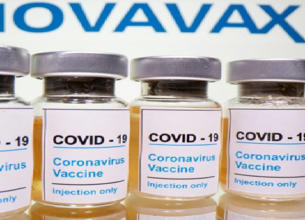NAMING A DISEASE BY WHO
15, Feb 2020

Prelims level : Medicine and Pharmaceuticals.
Mains level : GS-III Science and Technology - Developments and their applications and effects in everyday life Achievements of Indians in Science & Technology; Indigenization of Technology and developing New Technology.
Why in News?
- The World Health Organization officially announced COVID-19 as the name for the disease caused by the novel coronavirus.
- This comes more than 40 days after WHO was alerted by China about a cluster of pneumonia-like cases seen in the city of Wuhan in Hubei province.
- The “co” stands for “corona”, “vi” for “virus” and “d” for “disease”, while “19” was for the year, as the outbreak was first identified on December 31.
Highlights:
- The WHO had to come up the name in line with the 2015 guidelines between the global agency, the World Organisation for Animal Health and the Food and Agriculture Organization.
- The Coronavirus Study Group of the International Committee on Taxonomy of Viruses, which had assessed the novelty of the human pathogen, has named the virus as “Severe acute respiratory syndrome coronavirus 2”, or “SARS-CoV-2”.
- The Coronavirus Study Group is responsible for developing the official classification of viruses and taxa naming of the Coronaviridae family.
Reason for Naming:
- The name has been chosen to avoid references to a specific geographical location, animal species or group of people in line with international recommendations for naming aimed at preventing stigmatisation.
- WHO had earlier given the virus the temporary name of “2019-nCoV acute respiratory disease” and China’s National Health Commission was temporarily calling it “novel coronavirus pneumonia” or NCP.
- Under a set of guidelines issued in 2015, WHO advises against using place names such as Ebola and Zika, where those diseases were first identified and which are now inevitably linked to them in the public mind.
- More general names such as “Middle East Respiratory Syndrome” or “Spanish flu” are also now avoided as they can stigmatise entire regions or ethnic groups.
- WHO also notes that using animal species in the name can create confusion, such as in 2009 when H1N1 was popularly referred to as “swine flu”. This had a major impact on the pork industry even though the disease was being spread by people rather than pigs.
Significance of Naming:
- The urgency to assign a name to the disease is to prevent the use of other names that can be “inaccurate or stigmatising”. People outside the scientific community tend to call a new disease by common names.
- But once the name gets “established in common usage through the Internet and social media, they are difficult to change, even if an inappropriate name is being used.
- Therefore, it is important that whoever first reports on a newly identified human disease uses an appropriate name that is scientifically sound and socially acceptable.
Method of Naming:
- The WHO identified the best practices to name new human diseases in consultation and collaboration with the World Organisation for Animal Health (OIE) and the Food and Agriculture Organization of the United Nations (FAO).
- The main aim behind this exercise was to “minimise unnecessary negative impact of disease names on trade, travel, tourism or animal welfare, and avoid causing offence to any cultural, social, national, regional, professional or ethnic groups”.
- The name of a new disease should consist of a combination of terms. These terms consist of a generic descriptive term based on clinical symptoms (respiratory), physiological processes (diarrhoea), and anatomical or pathological references (cardic).
- It can refer to specific descriptive terms such as those who are afflicted (infant, juvenile, and maternal), seasonality (summer, winter) and severity (mild, severe).
- The name can also include other factual elements such as the environment (ocean, river), causal pathogen (coronavirus) and the year the new disease is first detected with or without mentioning the month.
- The WHO has also listed out the terms that should be avoided while naming a new disease. This includes, geographic locations, people’s names, species of animal or food, references to culture, population, industry or occupation, and terms that incite undue fear.
- A couple of diseases carry the name of the person who first identified the disease. Chagas disease is named after the Brazilian physician Carlos Chagas, who discovered the disease in 1909.
- Some diseases carry the name of animals, bird flu (H5N1) and swine flu (H1N1). The 2009 H1N1 pandemic was commonly referred to as swine flu. It is important to note that the 2009 pandemic virus was not completely derived from swine.
















